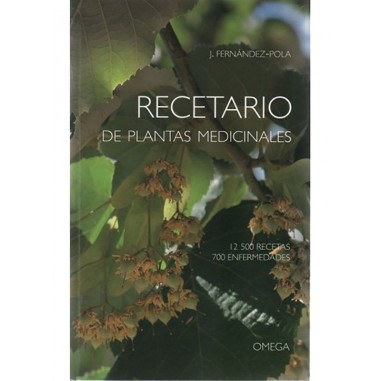RECETARIO DE PLANTAS MEDICINALES J. Fernández-Pola
Discover the Herbal Medicine Recipe Book by J. Fernández-Pola, an essential work that combines ancient wisdom and scientific knowledge for natural health care.
- 416 illustrated pages with 200 color photographs
- Recipe book organized by diseases and properties of plants
- Includes tables, charts, and practical equivalences
- Flexible cover edition and manageable format (14 x 21.5 cm)
Discover the power of nature in your hands with J. Fernández-Pola's Herbal Medicine Recipe Book. This book is not just a guide, it is your ally to naturally and effectively transform your well-being. With over 400 pages of ancestral wisdom and practical advice, it offers the keys to heal, prevent, and care for yourself and your loved ones safely and sustainably.
This recipe book is much more than a book: it is an essential tool for those seeking natural solutions to everyday problems. From common ailments to preventive care, you will find detailed recipes, precise dosages, and preparation methods that allow you to make the most of the healing properties of plants. Your health deserves the best, and this book offers it.
In addition, the Herbal Medicine Recipe Book provides a unique experience thanks to its practical and accessible approach. With 200 color photographs, equivalence tables, and step-by-step guides, you will feel supported at every stage of the process. Whether you are just starting in the world of herbal medicine or are an expert, this book adapts to your needs and inspires you to explore the healing potential of nature.
What makes this recipe book unique is its scientific rigor combined with clear and approachable language. J. Fernández-Pola, a reference in the field, has created a work that informs and also empowers. With it, you will learn to collect, preserve, and prepare medicinal plants effectively, always guaranteeing the best results.
- Recipes organized by diseases: Find natural solutions quickly for more than 100 common ailments.
- Precise dosages: Learn to calculate exact amounts based on age and weight, ensuring safety and effectiveness.
- A visual guide with 200 photographs: Easily identify plants and preparations thanks to detailed and colorful images.
- Step-by-step preparation methods: From infusions to tinctures, master the most effective techniques.
- Collection and preservation tips: Maximize the properties of plants using professional techniques.
- Scientific and practical information: Combine ancestral wisdom with updated data for an integrated approach.
Do not miss the opportunity to have this treasure of knowledge in your hands. J. Fernández-Pola's Herbal Medicine Recipe Book is more than a book; it is an investment in your health and well-being. Today is the moment to take control of your life naturally. Acquire your copy and start enjoying the benefits that only nature can offer!



